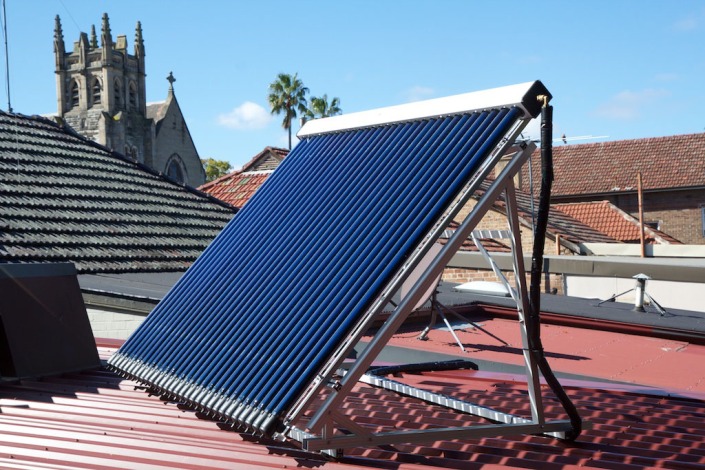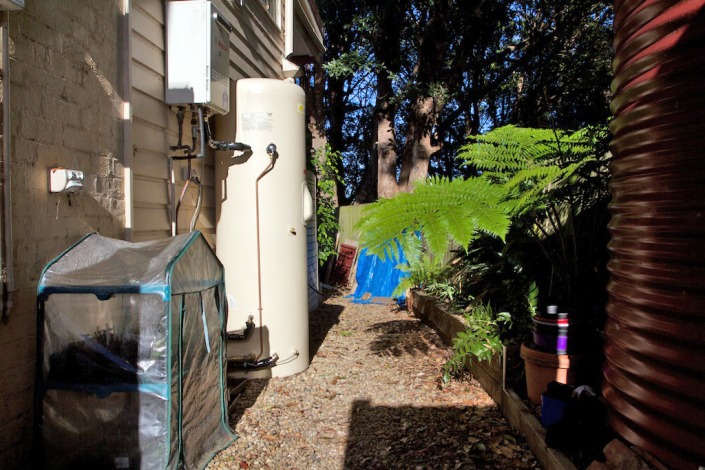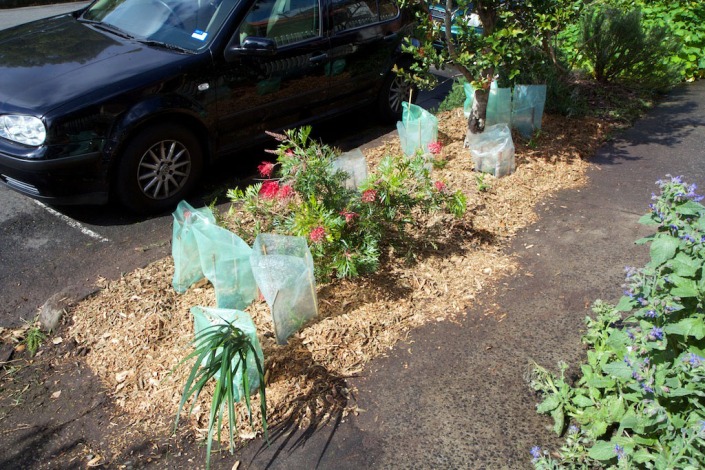Month: September 2014
Completing the set: we now have solar hot water

When the feed in tariff for solar electricity was put in place, we were one of the early movers, installing a 1.6kw solar PV system on our roof. With the limited space on our roof, we had to pick between solar electricity and solar hot water, and we chose the former.
Once we finished our renovation, however, we had 99m2 extra of flat roof to play with.
Nonetheless, we’d already purchased a super-efficient instantaneous gas system to replace our 1988-era electric hot water tank. We’d hardly be saving the environment if we threw that away, so solar hot water remained on the long-term to-do list.
With the likelihood of rising gas prices over the next few years, I recently looked back into solar hot water options.
What I discovered is that it was possible to reuse our instantaneous gas system as part of a solar hot water installation.
It’s simple really: the evacuated tubes on the roof heat up the water in a storage tank (shown below). The output of the tank goes through the instantaneous gas system. If the water is already hot, the gas system does nothing. If it’s only warm, it boosts it as required.
So no manual boosting or fiddling around, with a 100% guarantee of hot water.
We ended up purchasing a system with 30 evacuated tubes, plus a 300L storage tank. This is far in excess of what we need for two people, but with the roof partially shaded in winter, the extra tubes were chosen to ensure we take maximum advantage of the morning sun.
We’ll be getting back $1300 from the government for the STCs (solar credits).
On current gas prices, the payback period is 8-10 years, which isn’t great. But I’m expecting the gas prices to rise, which should seriously shorten the payback period.
Anyway, it’s good to complete the set of environment-saving technologies 🙂
PS. after 3+ months of no rain, we had 2 solid weeks of rain immediately after putting in the solar hot water. Not great for our solar generation, but good for the garden I guess 😉

We’re opening our house for Sustainable House Day 2014

One of the best things about our eco efforts is the way it helps us connect with locals from across Lewisham, Leichhardt and beyond. We’ve had many conversations across the front fence, about our vege patch, the solar panels, bees and more.
This year, we’re opening the house for even more conversations, as part of Sustainable House Day 2014.
On Sunday September 14th, 10am – 4pm, you’re most welcome to drop in for a house tour, and an opportunity to connect up with other folks interested in urban sustainability. (Note: we’re only opening on the 14th, and we won’t be opening on the 7th.)
Our house will be up on the SHD website shortly, which will give you the address a few days before we open the house. In the meantime, add the 14th into your diary.
See you soon!
Digging up the last of our nature strip

Soon after we moved into our house in Lewisham, we dug up a section of the nature strip, and planted citrus trees and herbs. While three of the citrus were immediately stolen, we continued to build up the strip in front of our door, until it was lush and vibrant.
A year ago, we pulled up another section of the nature strip, and native plantings quickly took over.
As it turns out, the local council would actually prefer us to pull up little sections of grass, rather than leave them squeezed in amongst other plantings. This makes life easier for the council staff who do the mowing, and helps to reduce the cost of maintaining the streets.
So with just one piece of grass left between the two sets of plantings, we sorted that out this last weekend.

The process of pulling out the grass is easier than it looks. The roots are shallow, so some mattock work lifts out chunks of grass. It’s then just a matter of digging through the soil to get out as many remnant grass roots as possible.
I then topped it up with some spare soil, and added a little native plant fertiliser.
I’ve been growing a number of native plants from cuttings, so these provided the start of what should become a thick bushy area. Plants include mint bushes (prostanthera), correas, dianellas, and a number of ground covers (including pigface). (We planted the grevillea six months ago.)

I collected some free mulch from the local council nursery, and the end result looks rather good I think. Over the next month I’ll finish off the plantings, and by then I’m expecting the seedlings to start putting on some serious growth.
Another piece of grass replaced by native plants, yay!